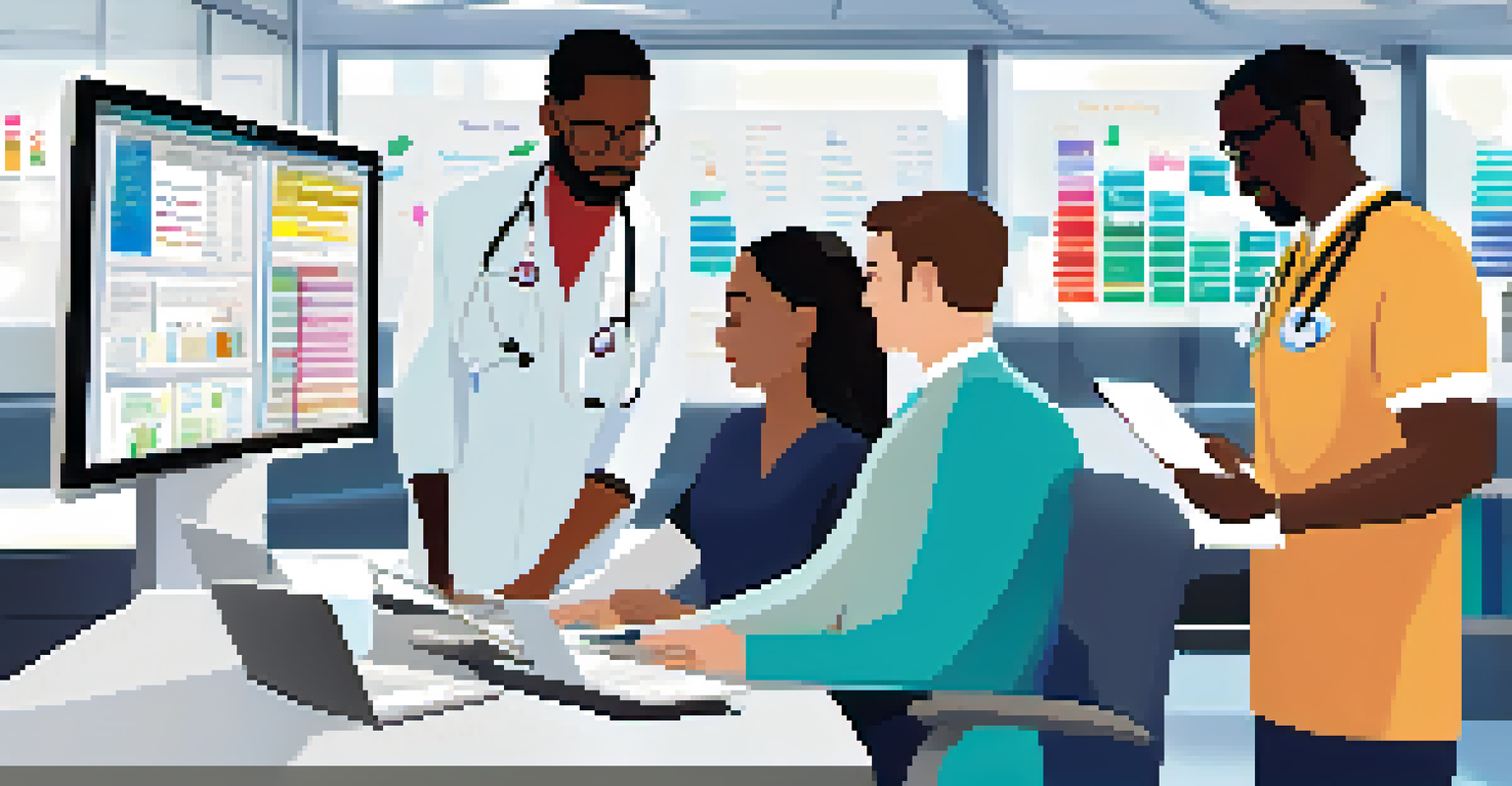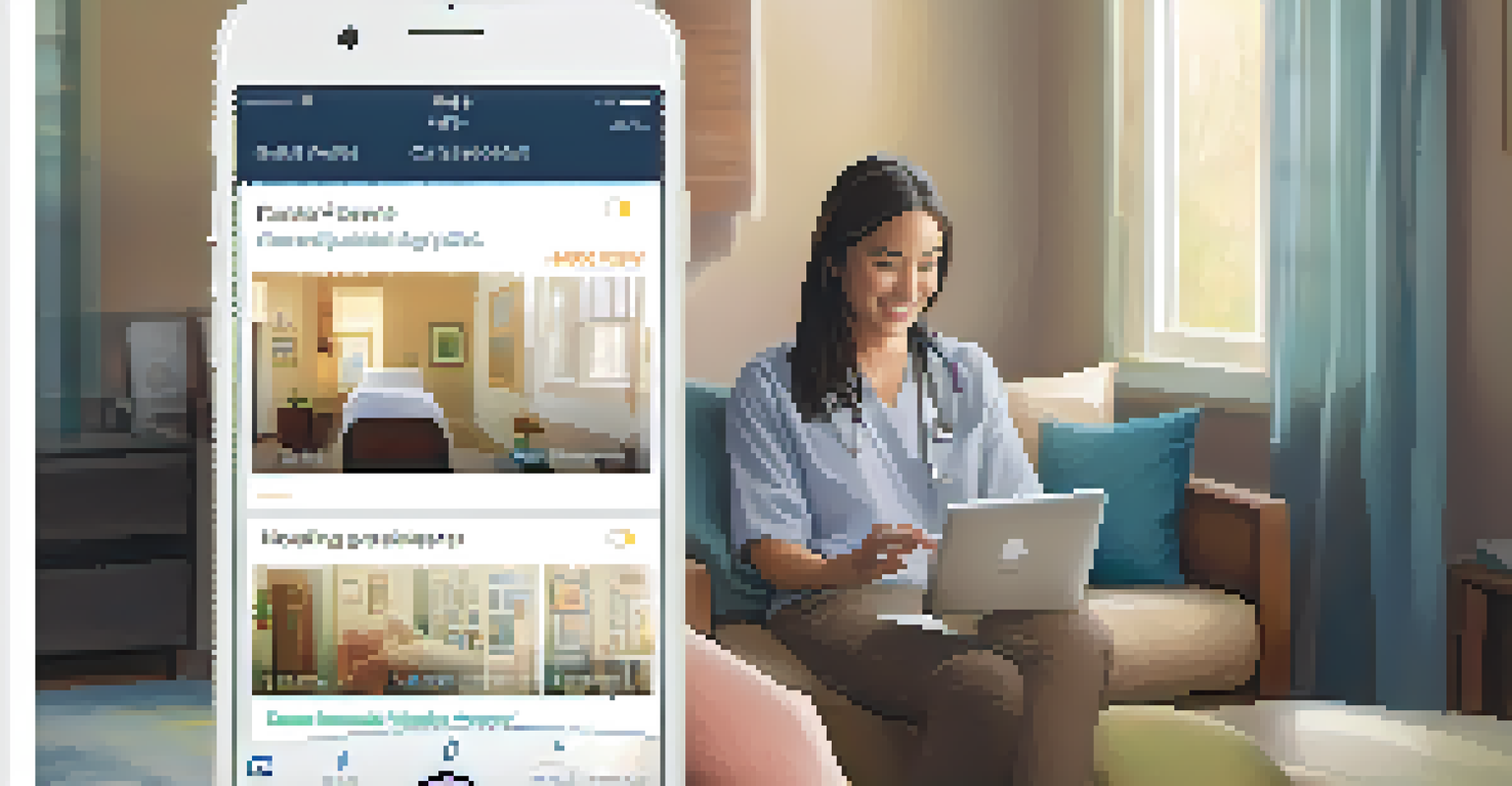Key Features of Effective Electronic Health Record Systems

User-Friendly Interface Enhances Usability and Adoption
A user-friendly interface is crucial for ensuring that healthcare professionals can navigate the electronic health record (EHR) system with ease. When the interface is intuitive, clinicians can quickly access patient information, leading to improved workflow and reduced errors. For instance, an EHR that employs clear menus and dashboard layouts allows users to find what they need without unnecessary frustration.
The goal of EHRs is to provide timely access to the right information, at the right time, to make the right decisions.
Moreover, a streamlined design can significantly reduce the training time required for new staff members. Instead of struggling with complex features, they can focus on patient care right from the start. This ease of use not only boosts productivity but also enhances the overall experience for both staff and patients.
In a fast-paced healthcare environment, simplicity can be a game changer. When EHRs are designed with the end-user in mind, the likelihood of adoption increases, resulting in a more efficient healthcare system.
Interoperability Facilitates Seamless Information Sharing
Interoperability is a key feature that allows different health systems to communicate and share patient data seamlessly. This means that healthcare providers can access a patient's complete medical history, regardless of where they received care. Imagine a patient visiting a specialist who can instantly view their previous tests and treatments, enhancing decision-making.

When EHR systems are interoperable, it reduces the chances of duplicated tests and conflicting information, ultimately leading to better patient outcomes. Furthermore, it promotes coordinated care, as all providers involved in a patient's treatment are on the same page.
User-Friendly Interface Boosts Care
An intuitive EHR interface allows healthcare professionals to access patient information quickly, improving workflow and reducing errors.
The importance of interoperability becomes even more evident during emergencies, where quick access to information can be lifesaving. Ensuring that EHR systems can integrate with various platforms is essential for modern healthcare.
Robust Security Measures Protect Sensitive Patient Data
In an age where data breaches are common, robust security measures are non-negotiable for electronic health record systems. Implementing strong encryption, secure access controls, and regular audits helps safeguard sensitive patient information. For example, multi-factor authentication adds an extra layer of protection, ensuring that only authorized personnel can access patient records.
When patients are empowered to take control of their health information, they are more likely to engage with their care and improve their health outcomes.
Moreover, compliance with regulations such as HIPAA (Health Insurance Portability and Accountability Act) is crucial. These regulations set the standard for protecting patient information, and EHR systems must be designed to meet these requirements. Failure to comply can result in severe penalties and loss of trust among patients.
Ultimately, a secure EHR system not only protects patients' privacy but also builds credibility for healthcare providers. Patients are more likely to share sensitive information when they trust that their data is safe.
Customizable Templates Enhance Documentation Efficiency
Customizable templates in EHR systems allow healthcare providers to tailor documentation to their specific needs. By using templates that fit their practice or specialty, clinicians can save time on data entry and focus more on patient care. For instance, a cardiologist might prefer templates that highlight cardiac assessments, while a pediatrician could customize theirs for developmental milestones.
These templates can also standardize documentation across the practice, making it easier for multiple providers to understand a patient's history. Consistency in documentation can enhance communication and collaboration among healthcare teams, leading to improved patient care.
Interoperability Enhances Patient Care
Seamless information sharing between health systems ensures that providers have complete patient histories, leading to better decision-making and outcomes.
In addition, customizable templates can be updated as guidelines change, ensuring that healthcare professionals are always using the most current practices. This adaptability is key to maintaining high-quality care in a dynamic healthcare landscape.
Comprehensive Reporting Tools Aid in Data Analysis
Effective EHR systems come equipped with comprehensive reporting tools that facilitate data analysis and decision-making. With the ability to generate reports on patient demographics, treatment outcomes, and practice efficiency, healthcare providers can gain valuable insights. For example, a clinic can analyze trends in patient visits to identify peak times and allocate resources accordingly.
These reporting capabilities not only enhance operational efficiency but also support quality improvement initiatives. By analyzing data trends, healthcare providers can identify areas for improvement and implement changes that lead to better patient care.
Furthermore, robust reporting tools can aid in regulatory compliance by streamlining the process of reporting required data. This makes it easier for healthcare facilities to meet their obligations while focusing on delivering quality care.
Patient Portal Features Empower Patient Engagement
Patient portals are an essential feature of modern EHR systems that empower patients to take an active role in their healthcare. Through these portals, patients can access their medical records, schedule appointments, and communicate with their providers. This accessibility fosters transparency and encourages patients to engage more with their health.
Additionally, patient portals can provide educational resources tailored to individual health needs, further promoting self-management. For example, a patient with diabetes might receive personalized tips and tracking tools to help manage their condition effectively.
Mobile Access Supports Timely Care
Mobile accessibility in EHR systems enables healthcare providers to access and update patient information on-the-go, enhancing continuity of care.
By enhancing patient engagement, EHRs contribute to better health outcomes. When patients are informed and involved, they are more likely to adhere to treatment plans and attend follow-up appointments.
Clinical Decision Support Enhances Patient Safety
Clinical decision support (CDS) tools integrated within EHR systems are designed to enhance patient safety by providing timely alerts and recommendations. These tools can notify healthcare providers of potential drug interactions, allergies, or other critical information before prescribing medications. For instance, if a patient is allergic to penicillin, the system will alert the clinician to avoid that medication.
CDS not only helps prevent errors but also supports evidence-based practices by providing access to the latest clinical guidelines. This ensures that healthcare providers are making informed decisions based on the most current research and protocols.

Ultimately, clinical decision support tools can lead to improved patient outcomes and increased confidence among healthcare providers. When clinicians have reliable information at their fingertips, they can deliver a higher standard of care.
Mobile Accessibility Supports On-the-Go Healthcare Delivery
In today's fast-paced world, mobile accessibility is a vital feature of effective EHR systems. Healthcare providers need the ability to access patient records and documentation from their smartphones or tablets, especially during home visits or while in transit. This flexibility allows for timely decision-making and enhances the continuity of care.
Mobile EHR access also facilitates real-time updates, ensuring that patient information is current and accurate. For example, a physician can update a patient's chart immediately after a consultation, reducing the chances of errors or omissions.
Moreover, mobile accessibility can improve communication between healthcare teams. Staff can share important information instantly, which is crucial for coordinated care, especially in emergency situations. By embracing mobile technology, EHR systems can significantly enhance healthcare delivery.